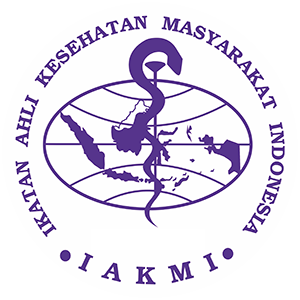DETEKSI ULKUS DIABETIK DAN PEMERIKSAAN KADAR GULA DARAH PADA PENDERITA DIABETES MELLITUS DI SURAKARTA
DOI:
https://doi.org/10.30787/gemassika.v5i2.758Keywords:
Diabetes mellitus, blood sugar levels, Ankle Brachial Index, foot sensitivity, foot ulcersAbstract
Diabetes mellitus (DM) is among the top 10 patterns of disease in Surakarta. The prevalence of DM in Surakarta was 5,470 per 100,000 inhabitants in 2018. Dm sufferers can occur neuropathic disorders, structural changes, callus skin protrusions, skin and nail changes, leg wounds, infections and vascular abnormalities. 50% of DM sufferers have a disability in the legs, 24% have peripheral neuropathy and another 11% have peripheral vascular disease. 60% of all patients have a risk of leg ulcers occurring. To do this prevention, it is necessary to detect diabetic foot ulcers and blood sugar levels on a regular basis. From the examination conducted to 49 dm sufferers obtained 19 dm sufferers have high blood sugar levels. From the Ankle Brachial Index (ABI) examination there were 4 people with ischemia, and from the examination of foot sensitivity there were 5 people experiencing a decrease in foot sensitivity. Based on the results of the examination, DM sufferers know their blood sugar levels and also know the level of risk of diabetic foot ulcers, so as to take precautions so as not to occur diabetic wounds, especially in the legs.
Â
Â
References
Abdulghani, Hamza Mohammad et al. 2018. “Prevalence of Diabetic Comorbidities and Knowledge and Practices of Foot Care among Diabetic Patients: A Cross-Sectional Study.†Diabetes, Metabolic Syndrome and Obesity: Targets and Therapy Volume 11: 417–25. https://www.dovepress.com/prevalence-of-diabetic-comorbidities-and-knowledge-and-practices-of-fo-peer-reviewed-article-DMSO.
Adiewere, P. et al. 2018. “A Systematic Review and Meta-Analysis of Patient Education in Preventing and Reducing the Incidence or Recurrence of Adult Diabetes Foot Ulcers (DFU).†Heliyon 4(5): e00614. https://doi.org/10.1016/j.heliyon.2018.e00614.
Arista, I. G. P., Yasa, I. D. P. G. P., Wedri, N. M., Widastra, I. M., Rahayu, E. 2019. Nilai Ankle Brachial Index (ABI) Dengan Neuropati Perifer Diabetik Pada Pasien Diabetes Melitus Tipe 2. file:///C:/Users/HP/Downloads/818-1913-1-PB.pdf
Astari, R. 2016. Hubungan Antara Kepatuhan Terapi Diet Dan Kadar Gula Darah Puasa Pada Penderita Diabetes Melitus Tipe 2 di Wilayah Kerja Puskesmas Purnama Pontianak.
Bañuelos-barrera, Patricia, and Yolanda Banuelos-barrera. 2013. “Risk Factors of Foot Ulceration in Patients with Diabetes Mellitus Type 2.†Invest Educ Enferm 31(3): 442–49.
Barros, Marcelo C De et al. 2010. “Resistance Exercise and Glycemic Control in Women with Gestational Diabetes Mellitus.†American Journal of Obstetrics and Gynecology: 1–6.
Church, Timothy S et al. 2010. “Effects of Aerobic and Resistance Training on Hemoglobin A 1c Levels in Patients With Type 2 Diabetes.†JAMA 304(20): 2253–62.
Dinas Kesehatan Kota Surakarta. 2018. “Profil Kesehatan Tahun 2017 Kota Surakarta.â€
Kementrian Kesehatan. 2018. Riskesdas. Jakarta: Kementerian Kesehatan Republik Indonesia.
Kluding, Patricia M et al. 2014. “Safety of Aerobic Exercise in People With Diabetic Peripheral Neuropathy.†Journal of the American Physical Therapy Association.
LeMone, Priscilla, Karen M Burke, and Gerene Bauldoff. 2015. Buku Ajar Keperawatan Medikal Bedah. 5th ed. Jakarta: EGC.
Lukita, Yulfa Intan, and Nur Widayati. 2018. “Pengaruh Range of Motion ( ROM ) Aktif Kaki Terhadap Risiko Terjadinya Ulkus Kaki Diabetik Pada Pasien Diabetes Mellitus Tipe 2 Di Desa Kaliwining Kabupaten Jember ( The Effect of Active Leg Range of Motion on the Risk of Diabetik Foot Ulcer in Patient Wi.†e-Jurnal Pustaka Kesehatan 6(2): 305–11.
Morrison, Steven et al. 2010. “Balance Training Reduces Falls Risk in Older Individuals With Type 2 Diabetes.†Diabetes Care 33(4): 748–50.
Najafi, Bijan, Manish Bharara, Talal K Talal, and David G Armstrong. 2012. “Advances in Balance Assessment and Balance Training for Diabetes.†Diabetes Manage 2(4): 293–308.
Nur, Abidah, Veny Wilya, and Raisuli Ramadhan. 2014. “Kebiasaan Aktivitas Fisik Pasien Diabetes Mellitus Terhadap Kadar Gula Darah Di Rumah Sakit Umum Dr. Fauziah Bireuen.†: 41–48.
Priyanto, Sigit, Junaiti Sahar, and Widyatuti. 2013. “Pengaruh Senam Kaki Terhadap Sensitivitas Kaki Dan Kadar Gula Darah Pada Aggregat Lansia Diabetes.†: 76–82.
Silalahi, Elny Lorensi, Surita Ginting, and Anita Johana Marpaung. 2015. “Pengaruh Senam Kaki Terhadap Sensitivitas Kaki Pada Penderita Diabetes Melitus Di Puskesmas Medan Tuntungan Tahun 2015.†(2007): 147–52.
Stephens, Natalie A, and Lauren M Sparks. 2015. “Resistance to the Beneficial Effects of Exercise in Type 2 Diabetes : Are Some Individuals Programmed to Fail ?†J Clin Endocrinol Metab 100(May): 43–52. jcem.endojournals.org.
Subandi, E. 2017. Pengaruh Senam Diabetes Perhadap Penurunan Kadar Gula Darah Pada Pasien Diabetes Mellitus Di Upt Puskesmas Mundu Kabupaten Cirebon Tahun 2017. Syntax Literate : Jurnal Ilmiah Indonesia.
Thangapandiyan., G.S., and Dr. A. Mahaboobjan. 2016. “Effect of Yoga on Glycaemic Level: A Pilot, Randomized, Comparative Study Between Walking and Yoga in Adult Male With Type 2 Diabetes Mellitus.†International Journal of Management and Social Science Research Review 1(14): 253–57.
Trisna, E., Musiana. 2018. Pengaruh Senam Kaki Terhadap Kadar Glukosa Darah dan Nilai ABI Penderita DM. Jurnal Kesehatan. http://ejurnal.poltekkes-tjk.ac.id/index.php/JK 439
Wahyuni, Aria, and Nina Arisfa. 2016. “Senam Kaki Diabetik Efektif Meningkatkan Ankle Brachial Index Pasien Diabetes Melitus Tipe 2.†Jurnal Ipteks Terapan 2: 155–64. http://dx.doi.org/10.22216/jit.2015.v9i2.231.
Yunir, Em et al. 2015. Upaya Pencegahan Diabetes Tipe 2. 1st ed. Jakarta: Balai Penerbit FKUI.












